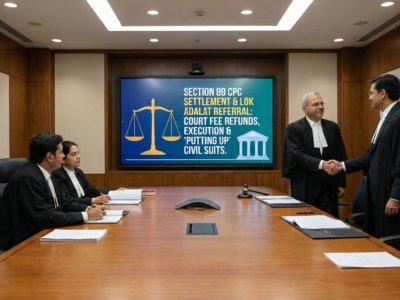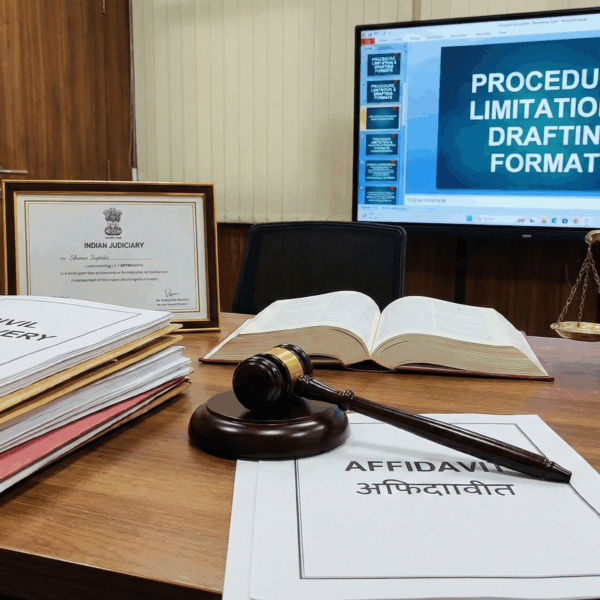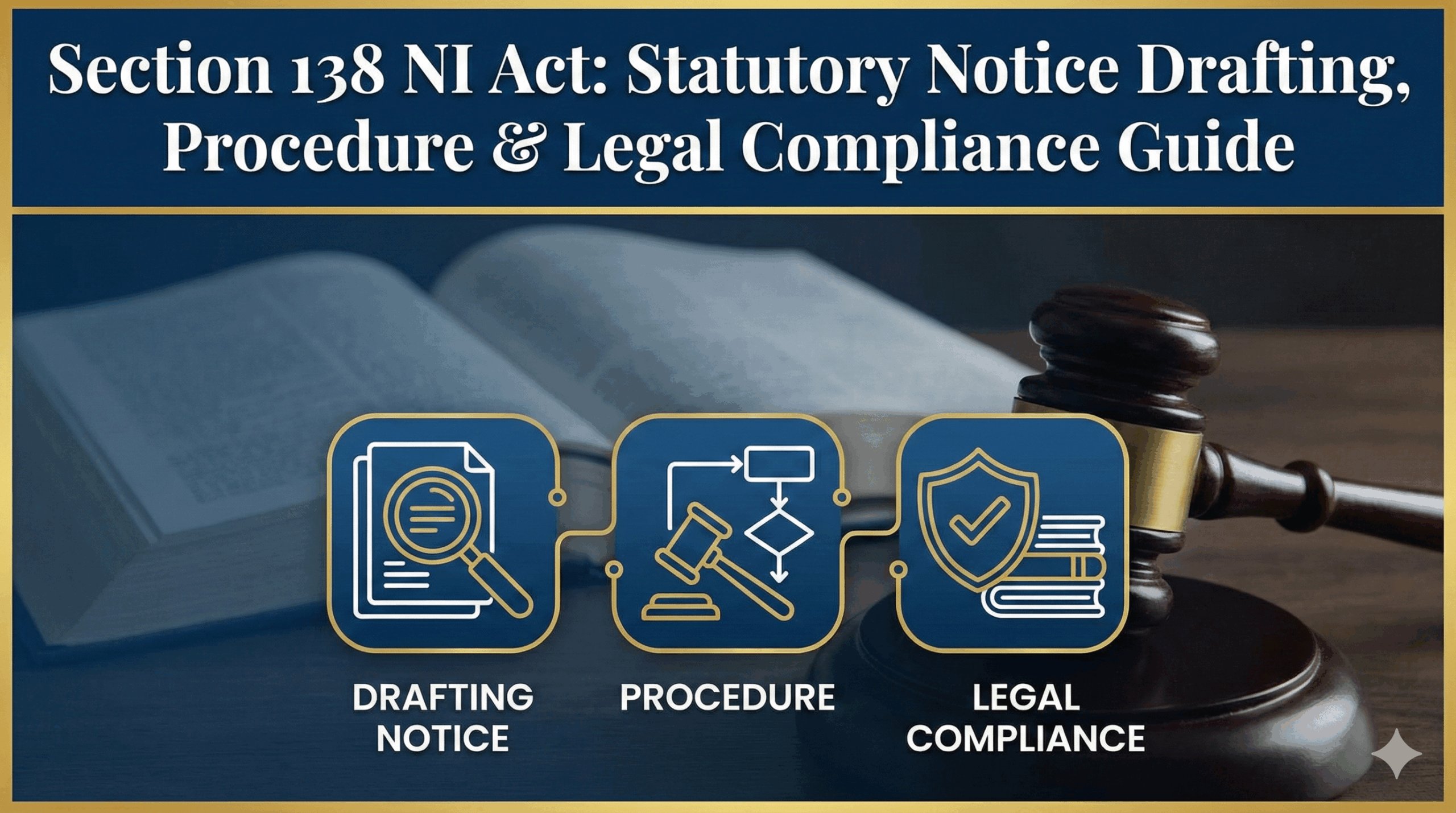Receiving a notice from the Income Tax Department can be unnerving, especially when it delves into your personal household spending. This guide provides a complete legal and strategic breakdown of the common notice issued under Section 142(1) for “low household withdrawal.” Here, you will understand the law, learn from real court cases, and use our interactive tools to build a confident and effective response.
evaakil.com
INCOME TAX NOTICE ANALYSIS
Decoding the Low Household Expense Inquiry
A strategic and legal guide to understanding and responding to notices under Section 142(1) of the Income-tax Act, 1961.
Part I: Decoding the Section 142(1) Inquiry Notice
Anatomy of a Section 142(1) Notice
What it is
A formal request for information, documents, or a tax return. It's an inquiry, not an accusation.
When it's Issued
Either when you haven't filed a return, or when the filed return needs clarification.
What can be asked
Your tax return, books of account, bank statements, and even a full statement of assets and liabilities.
Key Limitation: The 3-Year Rule
The Assessing Officer cannot ask for accounts or records that are more than 3 years old (prior to the financial year of assessment). This is a crucial legal protection against overly broad inquiries.
The "Low Household Withdrawal" Allegation & The Compliance Trap
This is the core of the notice. The tax department suspects your declared income doesn't match your lifestyle. Their logic is simple: if your official expenses are too low, you must be spending money from an undeclared source. By demanding an impossibly granular breakdown of daily expenses (like spices and haircuts), the officer may be setting a "compliance trap." Since no ordinary person keeps such records, any response can be deemed inadequate, creating a justification to reject your explanation and proceed with a Best Judgment Assessment.
The Threat of a Pre-Determined Addition
Your notice might contain a line like: "Failure to reply will result in an addition of ₹10,00,000." This is a major procedural flaw. Assessment is a quasi-judicial function that requires an open mind. By pre-quantifying an addition, the officer suggests the outcome is already decided, violating the principles of natural justice. This pre-judgement is a powerful point you can use in your defense and on appeal.
Part II: Understanding the Stakes: Best Judgment Assessment & Penalties
Ignoring or poorly handling a Section 142(1) notice can lead to serious consequences beyond the initial inquiry. It's crucial to understand the tools the tax department can use.
Best Judgment Assessment (Section 144)
If you fail to respond or comply, the AO can make a "Best Judgment Assessment." This means the officer will determine your income based on all relevant material they have gathered, to the best of their judgment.
A Key Safeguard
Before making such an assessment, the AO must issue a separate show-cause notice giving you one last opportunity to explain why the assessment shouldn't be completed this way. The "judgment" also cannot be purely arbitrary; it must have a rational basis.
Ancillary Consequences
Specific penalties are prescribed for non-compliance, even if you ultimately don't owe more tax:
-
Penalty under Sec 271(1)(b)
A flat penalty of ₹10,000 can be levied for each failure to comply with the notice.
-
Prosecution under Sec 276D
In cases of willful failure, this can lead to prosecution with imprisonment for up to one year and a fine. While rare, it highlights the seriousness of compliance.
Part III: The Judicial Perspective & Evidentiary Strategy
Guiding Principles from the Judiciary
Courts have consistently held that any addition for low household expenses cannot be based on mere suspicion or guesswork. The AO's estimate must be reasonable and guided by certain principles:
- Rational Basis: The officer must provide some logical basis for their estimate, not just an ad-hoc figure.
- Reasonableness: The estimate must be reasonable for the taxpayer's social status, family size, and city of residence.
- Family Contributions: Plausible explanations of contributions from other earning family members must be considered.
- Past Consistency: A consistent pattern of low withdrawals accepted in past assessments is a strong argument against a sudden high-pitched addition.
Key Rulings from Tax Tribunals & Courts
| Case Name | Principle Established | Takeaway for You |
|---|---|---|
| Manisha Gupta vs Assessee | The AO must consider the entire family's status and contributions, not just one person's withdrawals. | Your family members' contributions are a valid and strong defense. |
| Raj Kumar Kakrania vs DCIT | Purely ad-hoc additions without specific evidence to justify a higher expense are not sustainable. | The burden is on the AO to justify their estimate, not just pluck a number from thin air. |
| CIT vs Shri Sandeep Mehta | Recognized that if a spouse is also earning and contributing, one person's low withdrawal is not indicative of concealment. | Provide proof of your spouse's income (ITR, bank statements) to validate your claim. |
| DCIT vs Vidya Sagar | In the absence of any explanation, the AO has greater latitude to make an estimate, which can then be assessed as Unexplained Expenditure u/s 69. | Ignoring the notice is the worst strategy. Always respond, even if it's just to ask for more time. |
Building Your Defense: Evidence is Key
Since you won't have receipts for every small expense, you must build a defense using circumstantial evidence. The goal is to create a logical and credible narrative that discharges your burden of proof.
Bank Statements
Show payments for utilities, rent, EMI, insurance, etc., proving major expenses are non-cash.
Affidavits
A sworn statement from you and contributing family members can carry legal weight.
Family ITRs
The most powerful evidence. Show that other members have taxed income to contribute.
Lifestyle Note
Explain your circumstances: frugal habits, living in own home, using public transport, etc.
You can also strengthen your case with a comparative analysis of withdrawals over the last few years to show a consistent pattern.
Part IV: A Practical Toolkit for Responding
The E-Response Protocol: Partial vs. Full Response
All responses are now submitted online via the 'e-Proceedings' utility on the income tax portal. This makes your written submission critical. The portal gives you two strategic options:
Full Response
Choose this if you have all the required information and documents ready before the deadline.
Partial Response
This is a crucial strategic tool. If you need more time, submit what you have and include a formal request for an extension. This ensures you comply with the deadline and avoids a penalty, while officially recording your need for more time.
Interactive Decision Tool: How to Respond
Click through the steps to build your response strategy.
Step 1: Analyze the Notice
Does the notice mention a specific addition amount (e.g., "we will add ₹10,00,000") if you don't reply?
Drafting an Effective Response: Annotated Templates
Your response should be respectful, clear, and structured. Here are some annotated templates you can adapt.
1. The Legal Objection (If notice is pre-judged)
"At the outset, we wish to respectfully place on record our submission that the notice suggests a pre-determination of the issue by quantifying a proposed addition. This is contrary to the principles of natural justice, which require an inquiry to be conducted with an open and unbiased mind. We request that this legal objection be noted."
2. The Factual Rebuttal (Explaining granular details)
"It is submitted that the assessee, being a salaried individual, does not maintain records of day-to-day personal expenses in such a granular manner. However, to comply with the spirit of the notice, we have prepared a reasonable estimate of household expenditure based on an analysis of bank statements, attached as Annexure A."
3. The Family Contribution Defense (Your strongest point)
"It is submitted that the assessee's personal withdrawals do not represent the entirety of the household expenditure. The assessee's spouse, Smt. [Name] (PAN: [PAN]), is also an earning individual and contributes significantly from her income. To substantiate this, we are enclosing her ITR-V and bank statements as Annexure B."








